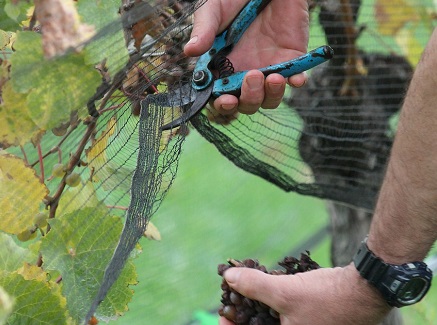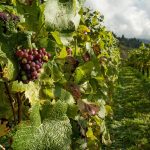With the 2020 winegrape season in full swing, more than 300 producers and viticulturists equipped themselves with the latest developments in wine grape cultivation at a series of Winetech Vinpro information days – from effective water usage to soil health and the management of pests and diseases.
The wine industry bodies Winetech and Vinpro presented the technical information days in Paarl, Stellenbosch, Vredendal, Robertson and Worcester from 17 September to 3 October 2019.
Be water wise
Although the majority of regions where wine grapes are cultivated have experienced a wetter season than the previous few years’ drought conditions, climate change and effective water usage remain on winegrape producers’ radar.
According to Dr Tara Southey of Stellenbosch University (SU), climate change can be clearly observed in weather patterns in the Western Cape. “The Robertson region is specifically experiencing higher maximum temperatures, lower minimum temperatures and a change in rainfall, with lower rainfall during winter.”
Producers are advised not to irrigate a little amount of water at a time, as most of the water then evaporates. On the other hand, too much irrigating to frequently may lead to berries expanding too much, decreasing the quality. Abie Vorster of Netafim and Vink Lategan of SU recommended that producers wet their soils sufficiently during irrigation. “Vineyards don’t have a large need for water during spring and soils that are too wet can limit early root growth,” cautioned Gert Engelbrecht of Vinpro.
Mulching is an important part of sustainable farming, can bring about water savings and doesn’t have to be expensive if you use material available on your own farm, says Bennie Diedericks of Resalt.
Look after your soils
There is currently a world-wide trend towards more sustainable practices to improve soil health. The demand for organic wine is also showing good growth internationally in terms of both volume and value, which could be an opportunity for South African wine producers, says Edo Heyns of Advini.
According to Johan de Jager of Vinpro, soil health rests on three pillars: the physical, chemical and biological characteristics. Soil mapping, classification and chemical adjustments are the first important steps to ensure a homogenous vineyard block that delivers good quality and yields. “It is crucial that you plan purposefully before establishing a vineyard. You have one chance to do it right,” he says.
Dr Johan van Zyl of SU who introduced the new book Soil Preparation for Sustainable Wine and Table Grape Vineyards in South Africa, says South Africa is globally at the forefront with regard to soil preparation. “Vineyard roots and their distribution (or not) provide the best guidelines to determine what exactly is happening in the vine,” he says. “Soil compaction is the biggest obstacle to good root growth. Loosen compaction and make plant pits with a pitchfork instead of a shovel to loosen the walls and prevent compaction.”
According to Braham Oberholzer of Nulandis, soils’ pH levels play an important role in decreasing compaction. The product Eco Grl can be used to treat soils with a low pH, Dekompakt is efficient on saline soils and Tiger 90 can be applied to soils with a high pH.
Diversity, carbon and nematode populations are good indicators of soil health, says Sheila Storey of Nemlab, while dr Pieter Raath of Labserve recommended that producers only use soil analysis methodologies that take the Western Cape’s distinct soils into account.
Prevent diseases & pests
Prevention is better than management when it comes to diseases and pests in the vineyard. “Don’t wait for powdery mildew symptoms to appear before you start spraying,” says Pieter le Roux of VillaCrop. He suggested that winegrape producers kick off their spraying programmes for powdery and downy mildew early in the season, and that they make adjustments to the spraying programme to save on costs towards the end of the programme when the risk for infection would be lower.
Although the window for the control of bud mite for the 2020 season has already closed, producers can start implementing control measures now to protect the 2021 crop. “Bud mite can lead to significant crop losses in sensitive cultivars, as it crawls into the bud and feeds on the shoot primordia of the next year’s crop and in essence eats away wine grape bunches even before they develop,” says Pieter. Certain products can be sprayed early in the season while bud mites are still mobile outside the bud.
Johannes Mellet of Klawer Cellar alerted producers in the Olifants River region to the increasingly common fanleaf virus in the region. The only control measure is to prevent the re-establishment of the virus when planting new vines on the same soil. “Remove old roots, practice crop rotation and let the soil lie fallow.”
According to Prof Pia Addision of SU trunk treatment remains the best available control strategy for ants. “Adhere to registered applications to ensure that it has a minimal effect on insect life,” she says.
New in the vineyard and cellar
Hennie Visser of Vinpro shared interesting observations from the Australian wine industry’s 17th technical conference. This industry is currently investigating interplantings with American rootstocks (not vitis vinifera) to increase resistance to phylloxera and drought.
New technology includes a camera that uses hyperspectral imaging to determine material other than grapes (MOG), as well as the extent of botrytis infection in wine grapes when they are delivered to the cellar.





















